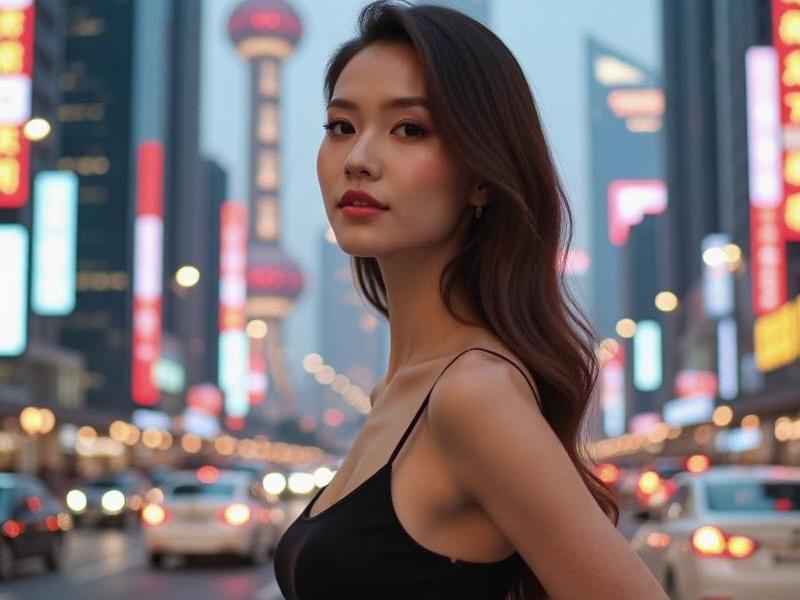Shanghai's Modern Women: Redefining Beauty, Ambition and Social Influence
⏱ 2025-05-15 00:43 🔖 爱上海千花网
📢0℃

1. The Shanghai Woman Phenomenon
1.1 Historical Context
- Treaty port cosmopolitan legacy
- 1920s "Modern Girl" movement origins
- Post-reform era professionalization
- Digital age global influences
1.2 Demographic Profile
- 52% of Shanghai's white-collar workforce
- Average marriage age: 30.4 years
- 68% hold university degrees
- 42% out-earn their partners
2. Professional Powerhouses
2.1 Career Advancement
- 35% of senior management positions
- 28% tech startup founders
- Dominance in finance/creative sectors
- "Returnee" advantage with global education
2.2 Entrepreneurship Trends
- 58% of boutique businesses female-owned
- Lifestyle brand revolution
- Social commerce leadership
上海龙凤千花1314 - Venture capital access improvements
3. Beauty Standards Evolution
3.1 Fashion Identity
- "Haipai" (Shanghai-style) minimalist chic
- High-low brand mixing mastery
- Sustainable fashion adoption
- Traditional cheongsam modern reinterpretations
3.2 Beauty Industry Impact
- 38% of China's cosmetic R&D
- Aesthetic medicine innovation
- "Natural enhancement" philosophy
- Global beauty trends adaptation
4. Lifestyle & Social Dynamics
4.1 Relationship Models
- Later marriage acceptance
- "Double Income No Kids" choices
- Co-habitation normalization
- Divorce rate stabilization
4.2 Leisure Preferences
上海龙凤419官网 - Art exhibition attendance boom
- Wine culture sophistication
- Wellness tourism growth
- Pet ownership surge
5. Digital Influence & Representation
5.1 Social Media Presence
- 62% of top Shanghai-based influencers
- Lifestyle content dominance
- Female-focused platform building
- Commercialization sophistication
5.2 Media Portrayals
- TV drama character evolution
- Advertising stereotype breaking
- Feminist discourse leadership
- Body positivity advocacy
6. Challenges & Contradictions
6.1 Persistent Barriers
- Glass ceiling in certain industries
- Ageism in hiring practices
- Beauty standard pressures
上海夜网论坛 - Work-life balance struggles
6.2 Generational Shifts
- Millennial vs Gen Z priorities
- Traditional value renegotiation
- Rural-urban divide perceptions
- Western feminism adaptation
7. Global Comparisons
7.1 International Parallels
- New York ambition parallels
- Tokyo fashion comparisons
- Seoul beauty standard contrasts
- London career trajectory similarities
7.2 Unique Shanghai Elements
- East-West fusion advantage
- Entrepreneurial ecosystem support
- Policy environment factors
- Cultural confidence manifestation
Conclusion: The Shanghai Standard
As sociologist Dr. Li Wen notes: "Shanghai women aren't just participating in China's modernization - they're actively designing it." Their unique blend of professional drive, aesthetic sensibility and social awareness creates a template that's reshaping perceptions of Chinese women nationwide while maintaining distinctive local characteristics that continue to fascinate global observers.
Shanghai Style Revolution: How Local Women Are Crafting a New Global Beauty Paradigm《边界消融时:上海与周边城市的"同城化"实验》Shanghai Showgirls: Entertaining Life on the Edge of CultureShanghai and the Surrounding Area: A Dynamic Hub of Economic and Cultural ExchangeShanghai's Nightlife Evolution: The New Era of Entertainment Clubs in China's Global CitySilicon Bund: Shanghai's Ambitious Quest to Become Asia's Tech Capital《共饮一江水:长三角生态绿色一体化发展示范区三年记》Shanghai's Nightlife Evolution: How Entertainment Venues Are Redefining Urban Leisure in 2025Shanghai's Neuro-Aesthetic Singularity: Where Jiangnan Silk Algorithms Rewrite Quantum GlamourNeon Renaissance: How Shanghai's Elite Clubs Are Redefining China's Nightlife Economy

